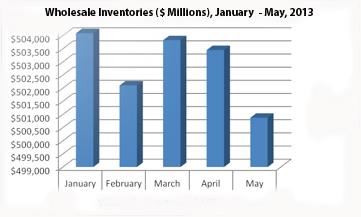Why the Economic Warning Signs Can Actually Be Good News
Submitted by Investment Contrarians as part of our contributors program
By George Leong
You can relax. Contrary to what you might have heard, the Federal Reserve is not going to stop printing money anytime soon.
- Up 7% This Year, Will Halliburton’s Gains Continue Following Q1 Results?
- Here’s What To Anticipate From UPS’ Q1
- Should You Pick Abbott Stock At $105 After An Upbeat Q1?
- Gap Stock Almost Flat This Year, What’s Next?
- With Smartphone Market Recovering, What To Expect From Qualcomm’s Q2 Results?
- Will United Airlines Stock Continue To See Higher Levels After A 20% Rise Post Upbeat Q1?
The market showed some relief last week after the Federal Open Market Committee (FOMC) meeting minutes indicated that the central bank wants to make sure the economy and jobs market are strong enough before scaling back on its bond purchases.
Apparently about half of the Fed members feel the cuts should begin later this year. Of course, when the cuts materialize will be dependent on the economic recovery and the decline of the unemployment rate to roughly 7.2%.
The Fed is clearly not that anxious to cut its purchases, and that’s because the Fed knows the underlying economic recovery is not particularly strong. The recent second-quarter gross domestic product, or GDP growth was a disappointing 1.8%, which was well below the Briefing.com estimate of 2.4%.
Also Read: NYSE Holidays 2013
So maybe the economic recovery is continuing to stall, which is why the Fed is hesitant.
This is great for investors in the stock market, as it will cap the recent rise in bond yields.
The picture of wholesale inventories indicated potential erosion in the U.S. economic recovery.
In May, the adjusted inventories of merchant wholesalers came in at a preliminary $500.9 billion, which was down 0.5% from April. (Source: “Monthly and Annual Wholesale Trade,” U.S. Census Bureau web site, last accessed July 12, 2013.)
What the readings suggest is that merchants are not increasing inventories and are actually cutting back, perhaps in anticipation of the economic recovery stalling.
A chart for wholesale inventories from January to May 2013 is featured below:

Chart copyright Lombardi Publishing Corporation, 2013;
Data source: U.S. Census Bureau
The last thing a merchant wants is to order excessive inventory and not be able to sell it when the economic recovery stalls.
I view the lower inventories as a red flag that the economy might be struggling. I think the Fed also realizes this and, therefore, wants to make sure there’s strength in the recovery before cutting its stimulus.
We will likely find out in the upcoming GDP readings if there is any strength in the economic recovery. And those readings are likely to falter and disappoint?if my analysis is correct.
If the economy stalls, you will also see it in the jobs market. The Fed confirmed in its minutes that it would leave interest rates at their record lows until the unemployment rate declines to 7.5% or lower.
This clearly means the cheap money is here to stay for at least another year or more, depending on how the economy performs and if we see signs of a strong economic recovery.
The beneficiary will be the stock market, along with the housing market and consumer spending. Even if bond yields rise a full point, stocks will still likely provide even better gains.
This article Why the Economic Warning Signs Can Actually Be Good News was originally published at Investment Contrarians
